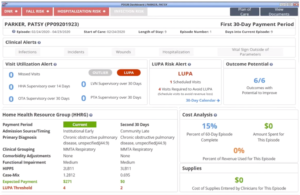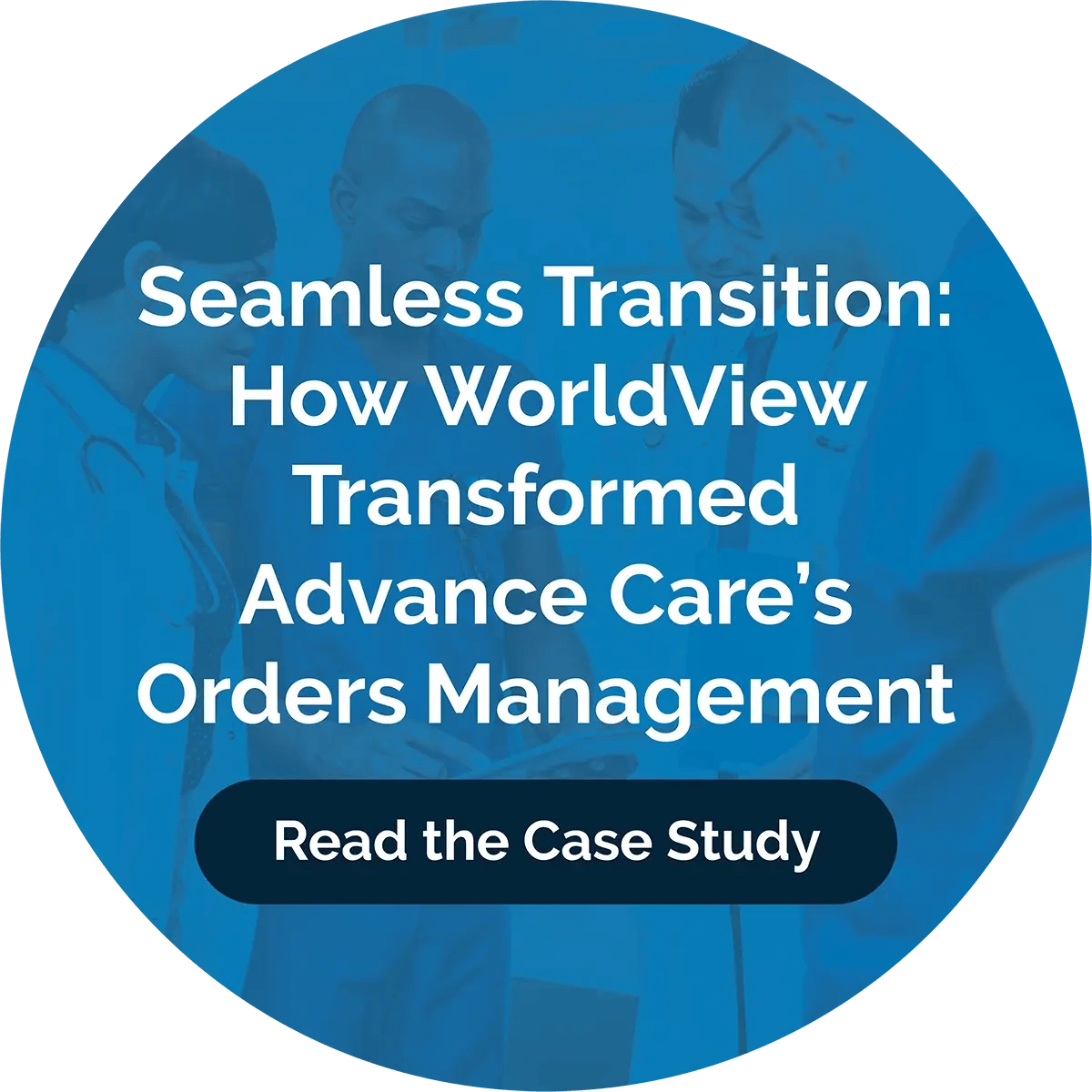How PDGM Changes Can Help HHAs Deal with the Nursing Shortage

HHAs are dealing with high turnover and a shortage of home health nurses. Changes made to address PDGM may actually be able to help you deal with that.
If you manage a home health agency (HHA), it may seem like the Patient-Driven Groups Model (PDGM) has turned your world upside down. But, as the saying goes, every cloud has a silver lining. Implementing process changes to adhere to PDGM compliance is helping some of our customers tackle one of their biggest business challenges: the home health nurse shortage and the high turnover in the industry.
Diagnosing the Problem
Before rendering a diagnosis and recommending treatment, it’s important to understand the underlying issue. The average tenure for a home health nurse is only 19 months (BLS). That means you can only expect any given hire to remain on the job for a year and a half before they either burn out or leave for an employer able to offer better working conditions.
The cost to recruit a replacement can be astronomical – $52K on average (NSI National Health Care Retention and Staffing Survey). Don’t expect to replace them quickly either. Recruitment periods are lasting 86 days on average.
But, these are all symptoms of the underlying problem that aren’t all centered around just PDGM changes. That is, being a home health nurse is a high-stress job. In a recent webinar, Axxess shared some of the feedback gathered from home health nurses. They said:
“I love my patients but after six months of staying up till 10 PM every night I finally had to leave.”
“[management must provide] relief of stress for field staff.”
“Documentation requires too much time!”
“Workload is equivalent to two full-time jobs!”
Not only is turnover expensive, but a stressed-out nursing staff can also impact overall patient care. Yes, home health nurses do the best job they can, but we don’t need studies to show us that employee burnout can lead to short tempers, lower-quality care, and an increase in errors.
How PDGM Changes Can Help Relieve Stress
It may seem counterintuitive that a change in billing and reimbursement protocols, especially one that requires 30-day billing increments instead of 60, could possibly help reduce paperwork and solve the issue of home health nurse burnout.
And, if you’re trying to solve the problem by simply implementing new processes, it probably won’t. In fact, it may exacerbate the issue as nurses struggle to comply with the coding requirements and shortened reimbursement cycles. By the time they sort it all out, they may already be planning to head off to greener pastures.
On the other hand, updating both the systems and processes you use can have significant benefits. Recently, WorldView conducted a webinar with Axxess to show how having the right systems and a single source for documentation can help you significantly streamline processes for less stress in your workforce and easier PDGM compliance.
Watch the webinar: Streamlining Documentation for PDGM Success
Here are just six of the many ways WorldView and Axxess work together to help make your home health care nurses’ lives easier while improving your bottom line and ability to serve patients.
#1 Eliminate Billing Delays and Rework. If a home health nurse (or a clinician) enters an ungroupable diagnosis, Axxess will alert the user and not allow them to proceed unless they’ve been assigned the appropriate access permissions. This can help eliminate the amount of rework that needs to be done and lessen the chance that an error will jeopardize reimbursement.

The patient-centered dashboard helps HHAs manage the first and second thirty-day billing periods.
#2 Tracking Comorbidity Resolution. Often a patient will have more than one condition that needs to be addressed. For example, they might have an acute illness as well as an underlying chronic condition. If the acute illness is resolved within the first thirty-day period, that information needs to be shared with billing. Unfortunately, manual and paper-based processes can be time-consuming and cumbersome. Axxess provides a change in focus form, which your home health nurses can use, from wherever they are, to capture everything your billing department needs to know.
#3 Paperless Faxing. Perhaps no industry makes more use of fax machines than healthcare. With all that paper, it’s easy for a fax to get lost or attached to the wrong patient, which in turn, increases paperwork billing errors and delays. Working together, Worldview and Axxess allow you to eliminate a good deal of the manual faxing and automatically attach faxes to the patient’s chart.
You can also “fax” documents directly from WorldView. Examples might be faxing lab results to a clinician or routing a document for a signature. This is especially helpful if a doctor forgot to sign an order. The document can be routed right back to them through WorldView.
#4 Less Data Entry. Your nurses didn’t enter their chosen profession just to spend time doing data entry. That isn’t why you hired them either. We can help them find more time to spend in front of patients by automatically populating forms for them. If you receive a type of document frequently, e.g., signed orders, our application can create a scannable QR code that automatically pulls in all the necessary data.
We also offer a feature called a Virtual Print Driver, that allows you to “print” documents from other sources into Axxess. In a recent training session, one attendee told us that, over the weekend, it took him four hours to pull documents for four separate patients from a portal and upload them. Using the Virtual Print Driver, we processed a 104-page patient document and sent it to Axxess in less than a minute. He was speechless.
#5 Automated Order Tracking. Right now, your nurses and other staff probably spend a significant amount of time tracking down orders. Though your team bears the brunt of these delays, they’re often not their fault. With PDGM, delays can also derail reimbursement, so you’ll want to streamline this as much as possible.
You can set up a schedule for how you want to handle orders that have not been signed and returned. With PDGM, many of our customers will automatically resend the orders at four days and again at seven days. You can also set up alerts for aging orders so your team is aware of any delays. We already talked about how WorldView allows you to send orders directly from the system, but we can also use our tracking functionality to track orders for physicians that still require a physical copy as well.
#6 Referral Management. Referrals are a constant in the healthcare world, but especially in-home healthcare. WorldView can automate the processing and tracking of incoming and outgoing referrals, saving your team time and helping to ensure your patients get the care they need.
Protocols are important. Every HHA has specific ways of doing things, and PDGM has requirements that must be met as well. Removing manual processes helps ensure these protocols are followed, while providing much-needed stress relief for your staff.
If you’d like to learn more about Axxess and WorldView, you can watch the webinar or visit us online.
Blog Post Tags
HealthcareGet Awesome Content Delivered Straight to Your Inbox!
Posts by topic
- Healthcare
- Business
- AI
- Hospice
- AP Workflows
- Home Care Management
- hospice-care
- General
- Industry Insights
- agency
- Blog
- Commercial
- reporting
- Data Analytics
- billing
- referrals
- News
- Referral AI
- business goals
- Operations
- business development
- partners
- Integration
- Healthcare Trends
- leadership
- Medicare
- Compliance
- audit
- medicaid
- Better Charting
- regulations
- Application
- Automation
- finance
- CRM
- DMSi
- Events
- KanTime
- Press Release
- Revenue Growth
- Announcements
- Artificial Intelligence
- EHR
- ESign
- Guides
- Homecare Homebase
- Mobile
- Physician Order Tracking
- axxess
- clinical
- interoperability
- payor See All See Less



.png?width=596&name=WV%20Hc%20Clinical%201%20Web%20(3).png)
.png?width=596&name=WV%20Hc%20Clinical%201%20Web%20(2).png)
.png?width=596&name=WV%20Hc%20Clinical%201%20Web%20(5).png)